Kerst kenmerkt zich door zelfgemaakte Michelinster-waardige maaltijden met vele gangen. En door het ophalen van de mooiste en oudste herinneringen met familie en schoonfamilie. Maar natuurlijk ook door de talloze cadeaus. En daar haken we vandaag op in. Want Kerst zou Kerst niet zijn zonder geschenken. Maar soms kan het toch verdraaid moeilijk zijn om weer wat leuks en verrassends te bedenken. Een reden voor ons om 8 tips voor duurzame cadeaus met jou te delen.
Duurzaamheid kan verschillende betekenissen hebben. Voor mij bijvoorbeeld, is een product duurzaam als het bestaat uit milieuvriendelijke materialen. Maar voor een ander ligt de nadruk misschien veel meer op lokale productie. Of op een lange levensduur.
Ga je duurzame cadeaus kopen voor de feestdagen? Er is dus genoeg om op te letten. Om je een handje te helpen, hebben we deze lijst met duurzame cadeaus opgesteld. Die helpt je ongetwijfeld om een passend en verrassend geschenk te vinden.
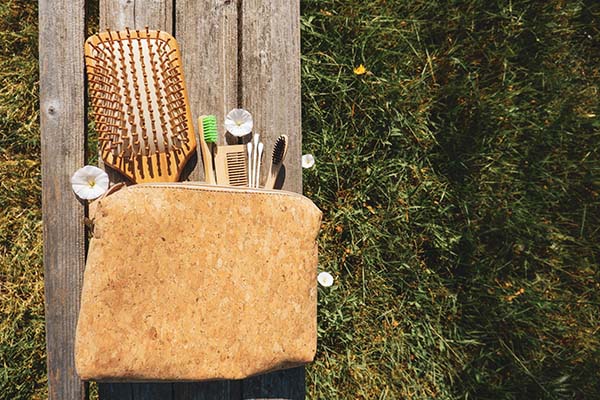
Lokale producten winnen steeds meer aan populariteit. En daar zijn goede redenen voor. Bijvoorbeeld dat je door het kopen van lokale producten geen artikelen hoeft over te laten komen uit Verweggistan. Want door transport te minimaliseren stoot je natuurlijk veel minder uit. Maar een andere aanleiding om lokaal te kopen heeft zich ook sterk ontwikkeld dit jaar. De lokale, en vaak kleinere, ondernemer moet hard werken om het hoofd boven water te houden. En al helemaal in tijden van economische onzekerheid. Dit is niet onopgemerkt gebleven. Er is veel steun voor de lokale ondernemer. Dat blijkt ook uit de veel gehoorde uitspraak ‘support your local’. Beide zijn goede redenen om jouw cadeaus lokaal in te kopen. Op De Landwinkel vind je een overzicht van allerlei verschillende boerderijwinkels in Nederland.
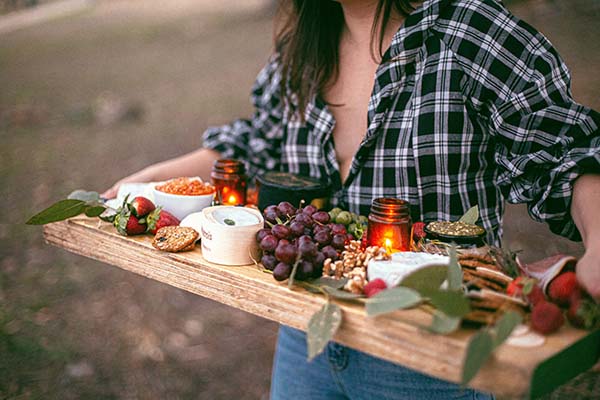
Als kind keek ik maar al te graag uit naar december. Sinterklaas kwam langs, de Kerstman vloog voorbij en daarnaast ben ik ook nog eens jarig op 1e kerstdag. De rest van het jaar kon ik weer vooruit met mijn nieuwe speelgoed. Maar helaas bestaat Lego, Playmobil en bijna al het andere speelgoed helemaal uit plastic. Zonde. Want dit hoeft helemaal niet zo te zijn. Ben je op zoek naar duurzaam speelgoed? Neem dan eens een kijkje op Reiger en de Graaf voor duurzaam handgemaakt speelgoed. Of bekijk de super toffe duurzame bouwpakketten voor kinderen van eco-logisch. Zo maak je van jouw eigen afval bijvoorbeeld een drumstel of een vuilnisrobot.
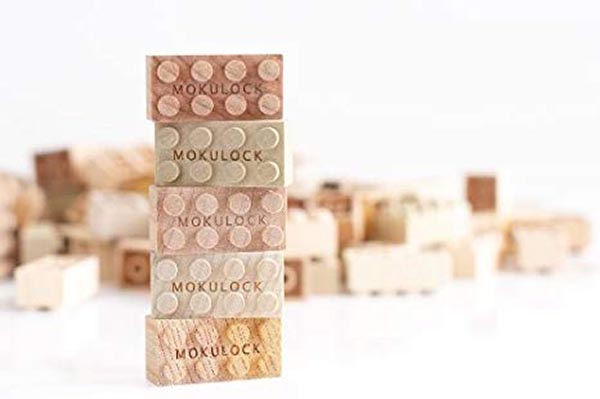
Koken: de een moet er niets van hebben en de ander staat met liefde de hele dag door in de keuken. Moet je nog een cadeau verzinnen voor een echte keukenprins(es)? Dan zit je bij Dille & Kamille gebakken voor een uitgebreid assortiment aan milieuvriendelijke keukenaccessoires. Ook bij KitchenHugs vind je prachtige duurzame artikelen om zero waste te koken.

Verzorgingsproducten zijn altijd populaire cadeaus. Setjes van Rituals zijn bijvoorbeeld al jarenlang ontzettend erg geliefd als kerstcadeau. Maar de meeste verzorgingsartikelen zitten helaas vol met microplastics en zijn ook nog eens in plastic verpakt. En aan de plastic soep willen we niet bijdragen met onze kerstcadeaus. Gelukkig zijn er genoeg heerlijke plasticvrije verzorgingsproducten die geen negatieve impact op de wereld hebben. Zelf hebben we bij The Bamboovement onze shop gevuld met vegan, palmolie-vrije en plasticvrije verzorgingsproducten van HappySoaps.
Koop je producten liever in de winkel? Bij Lush hebben ze een ruime keuze als het gaat om natuurlijke verzorgingsproducten. Van duurzame bath bombs tot parfum in een vaste vorm, je vindt het er allemaal. Nog niet helemaal overtuigd van duurzame cosmetica? Wij schreven een tijdje terug een blogartikel vol met tips over natuurlijke cosmetica.

Steeds meer mensen zijn zich bewust van de impact die onze kleding heeft op de wereld. Zo is er 2.700 liter water nodig voor één katoenen t-shirt. Verre van duurzaam dus. Ook worden er ongelooflijke hoeveelheden pesticiden gebruikt in de katoenindustrie.
Gecertificeerd katoen is al een stap in de goede richting. Maar er zijn ook nog een aantal andere mooie alternatieven die zelfs nog een stukje duurzamer zijn en zeker net zo stijlvol. SophieStone is een bekende naam onder de duurzame fashionista. Zij bieden prachtige mode items aan met een kleine milieu-impact die gemaakt worden onder verantwoorde arbeidsomstandigheden. Ga je liever voor vintage kleding? The Next Closet is dé marktplaats voor tweedehands designermerken. De kleding wordt uitvoerig gecontroleerd op authenticiteit en kwaliteit.

Cadeaus zijn altijd leuk om te krijgen (en om te geven natuurlijk). Maar een ervaring kan nog veel specialer zijn. Bij DoenKado hebben ze de perfecte activiteit voor iedereen in het assortiment. Trek erop uit en ga met je geliefde op een natuurtocht door de Veluwe. Liever iets sportiefs? Ga dan een middagje varen of wandklimmen. Of ben je op zoek naar iets waarmee je je vrienden echt kunt verbazen? Vlieg dan over het strand van IJmuiden met ze tijdens het Blokarten.

Niets fleurt je kamer of kantoor zo op als een prachtige plant. Hoewel de een misschien net wat groenere vingers heeft dan de ander zijn planten altijd een mooi cadeau om te geven. Bloemen daarentegen zijn minder geschikt als cadeau. Die zijn vaak gekweekt in een kas, hebben veel water nodig, krijgen een flinke portie bestrijdingsmiddelen en worden soms ook nog eens vanuit ver ingevlogen. En helaas ligt je cadeau dan vaak na een paar weken weer in de groenbak. Een plant daarentegen is waarschijnlijk het beste wat je in je huis kan halen. Ze zijn echte luchtreinigers dus creëren een gezonde atmosfeer. Daarnaast blijkt uit onderzoek dat mensen met meer groen om zich heen minder stress ervaren. Met een plant als cadeau zit je dus eigenlijk nooit fout.
Moeite met het uitkiezen van een plant? Geef een giftcard van plantsome, verpakt in een super tof brievenbusdoosje. Of bekijk het assortiment van Bloomgift voor een uitgebreid assortiment aan planten en boompjes.
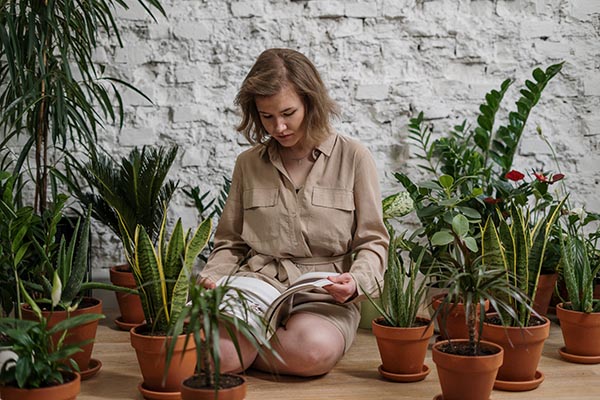
Niks.. ja hoe geef je dat nu eigenlijk? Met NIKS! Sommige mensen geven niet zoveel om fysieke cadeaus maar meer om de gedachte die bij het cadeau komt kijken. Greenpeace heeft dit mooi verwoord met hun cadeau NIKS. Het is voor mensen die niet willen bijdragen aan de steeds grotere berg spullen die we op de aarde creëren. Je ontvangt een biologisch afbreekbaar kaartje en het bedrag wordt aan Greenpeace gedoneerd.
Ken je iemand die helemaal happy wordt van NIKS? Neem dan een kijkje op de site van Greenpeace.

Het klassieke beeld van een cadeau is wereldwijd volledig genormaliseerd. Een geschenk dat pak je in, daar doe je een strik omheen en je hangt er een kaartje aan. Maar is dat nog wel van deze tijd? Cadeaupapier is namelijk bijna niet te recyclen. En elk jaar weer creëren we daar weer een behoorlijke berg van met zijn allen. Gelukkig zijn er een paar creatieve alternatieven voor de verpakking.
Een mooi cadeau verpakken in een krant? Het kan zeker! Als kind kreeg ik mijn cadeaus van mijn peetoom verpakt in kranten. Een beetje raar denk je in eerste instantie maar het is juist ontzettend leuk. Oké, cadeaupapier heeft allemaal leuke kleurtjes en printjes maar wanneer je een krant gebruikt, kan je het cadeau nog persoonlijker maken. Scheur niet zomaar de eerste beste pagina uit de krant maar probeer een artikel, column of foto te vinden die ook echt bij de ontvanger past.
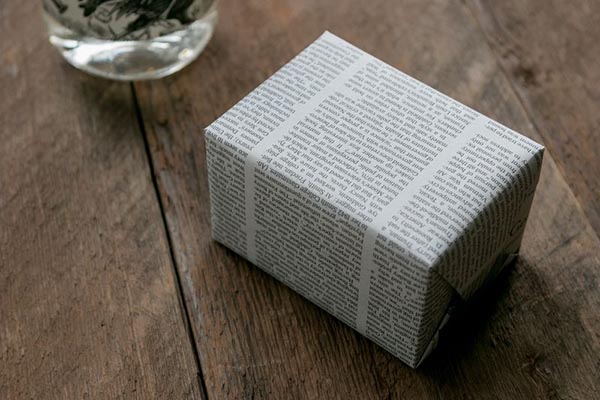
Hier kan geen cadeaupapier tegenop. De Japanse benaming voor de knoopdoek is te mooi om niet uit te proberen. Je pakt het cadeau namelijk in met een stuk stof (bij voorkeur een reststof zoals een oud tafelkleed of een theedoek) waarmee je de mooiste cadeauverpakkingen creëert. De Japanse techniek heeft in eerste instantie wat oefening nodig, maar eenmaal onder de knie maak je prachtige kunstwerken. Benieuwd hoe Furoshiki precies werkt? Kijk dan deze video.

Furoshiki niet helemaal onder de knie? Misschien is een cadeauverpakking eigenlijk ook niet echt nodig. Sommige mensen hechten helemaal geen waarde aan de verpakking en voor de anderen is het verrassingseffect toch een deel van al het plezier. Toch hoef je dit plezier niet te ontnemen als je ervoor kiest om een cadeau niet in te pakken. Je kunt het cadeau bijvoorbeeld ook ergens verstoppen of je creëert er een spelletje omheen.
Niet enthousiast geworden om het cadeautje te verpakken in een krant? Of geen tijd om een eeuwenoude Japanse techniek aan te leren? Als je toch graag je cadeau wilt inpakken, kies dan gerecycled cadeaupapier dat nogmaals gerecycled zou kunnen worden. Zo zorg je er in ieder geval voor dat er geen grote niet herbruikbare stapel verpakkingspapier achterblijft.
Afgelopen jaar hadden we bij The Bamboovement voor het eerst een duurzaam kerstpakket samengesteld. In samenwerking met het Wereld Natuur Fonds ontwierpen we een bamboe kistje, gevuld met producten om onze plastic-voetafdruk te verminderen. Met de verkoop van de kerstpakketten hebben we uiteindelijk €2.500,- kunnen doneren aan de plasticvrije campagne van het Wereld Natuur Fonds.

Dit jaar wilden we nog nét een stapje verder gaan. Want we staan er niet vaak bij stil, maar de hoeveelheid verpakkingen die we weggooien zijn enorm. Hier wilden we een creatieve oplossing voor bieden. Het kistje op de afbeelding hierboven was onze eerste stap. Het kistje kan namelijk omgedoopt worden tot handige bewaardoos of plantenbak. De deksel van het kistje kan eventueel worden gebruikt als snijplank.
Door de vele positieve reacties besloten we om dit jaar een nieuwe betekenis aan de bamboe cadeaubox te geven. Met het nieuwe kistje willen we zo veel mogelijk mensen inspireren om op een vernieuwende manier naar verpakkingen en producten te kijken. Het resultaat is onze Bamboe Cadeaubox 2.0.
Van kistje tot fruitschaal tot diner setje
Na afgelopen Kerstmis was het tijd om aan de tekentafel te zitten. Brainstormend over de mogelijkheden vonden we uiteindelijk inspiratie in een driedelige bamboe fruitschaal. Het idee was om de deksel en de twee lange zijdes te gebruiken voor een fruitschaal. De onderkant en de twee korte zijden bleven over voor een dinerset of borrelplankje. Na een flinke stapel papier aan berekeningen en tekeningen was het tijd om het eerste prototype te maken. Van MDF-hout maakten we een kistje met drie sleuven in de lange zijdes. Die waren nodig om de onderdelen van de fruitschaal naadloos in elkaar te kunnen schuiven.

De volgende stap was om een prototype uit bamboe te maken. In samenwerking met houtbewerker Boerboom uit Bergeijk verfijnden we het ontwerp. Benieuwd naar het resultaat, de Bambox 2.0? Bekijk dan het filmpje hieronder!
Wist je dat we afgelopen jaar in Nederland 7 miljoen kerstpakketten uitdeelden? Een groot gedeelte van deze pakketten bestaat, zoals je misschien zelf al hebt ervaren, vooral uit plastic producten. Jammer! Want ook zonder al die verpakkingen kan je de meest originele kerstpakketten uitdelen. Heb jij al een idee wat je dit jaar als kerstpakket gaat ontvangen? Werknemers vragen steeds vaker om een duurzaam kerstpakket. Niet raar natuurlijk, want het past perfect bij een zero waste Kerstfeest. Benieuwd waarom? Dat leggen we hier haarfijn uit!
Met onze Bambox 2.0 hebben wij een aantal unieke kerstpakketten samengesteld. Nieuwsgierig wat we ervan gemaakt hebben? Neem dan eens een kijkje op deze pagina.
Dit jaar hebben we als doel om 10.000 bomen te planten met de verkoop van onze kerstpakketten. En wie weet kan jij ons daarbij helpen. Zijn ze bij jouw op het werk nog op zoek naar een duurzaam kerstpakket? Lijkt het jou super tof om er eentje te ontvangen? Breng ze dan op hoogte van onze pakketten!

We zijn er trots op: 100% plasticvrije body bars. Ze ruiken heerlijk en zien er super vrolijk uit. Toch blijken ze voor sommigen nog een mysterie. De volgende twee vragen horen we immers regelmatig: wat is het verschil met normale zeep en hoe gebruik je een body bar nou eigenlijk? Gelukkig weten wij er alles van en leggen we je in deze blog uit hoe jij je body bar het beste gebruikt.
Eigenlijk is het heel simpel. Een body bar is een stuk zeep in vaste vorm. Zo’n blok net als vroeger? Precies, zoals de zeepblokken die iedereen gebruikte, maar dan toch nét iets anders. In tegenstelling tot normale zeep bevatten body bars namelijk uitsluitend natuurlijke producten.
Body bars zijn volledig vegan en vrij van parabenen en SLS, een chemisch schuimmiddel dat veelvuldig gebruikt wordt in cosmeticaproducten. Ze worden volgens een recept zonder palmolie met de hand gemaakt in Nederland, en geuren heerlijk door toegevoegde aromatische oliën. Bovendien zijn ze voor ieder haartype geschikt.
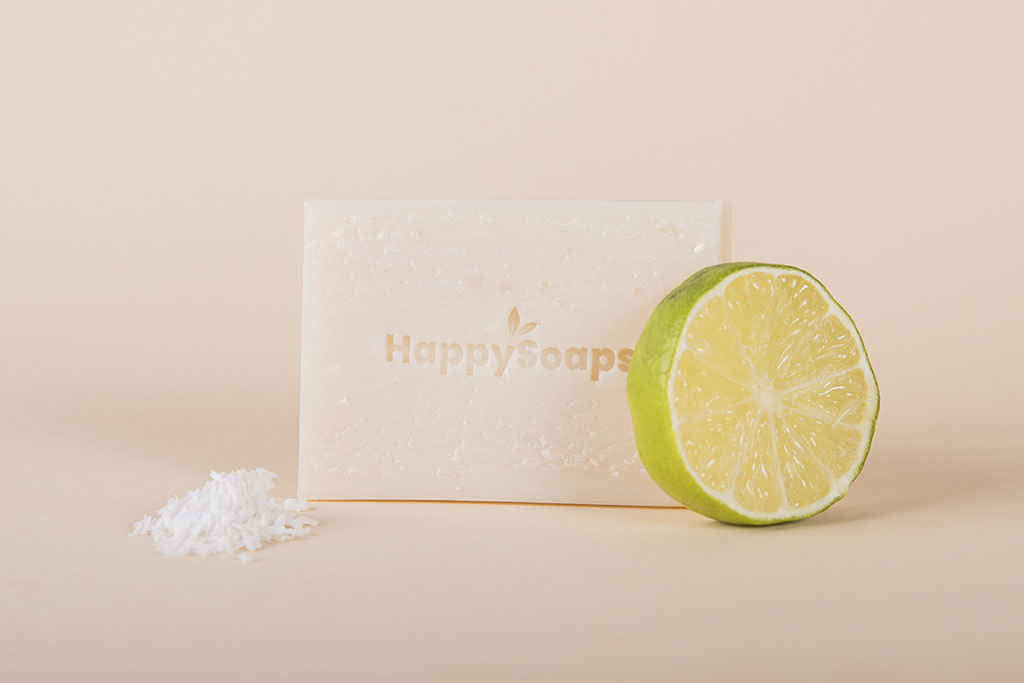
Maar het grootste voordeel van douchegel in vaste vorm? Het antwoord ligt voor de hand. Er is geen plastic fles voor nodig. Dit maakt een body bar vele malen milieuvriendelijker dan de ouderwetse voorloper. Een andere mooie bijkomstigheid? Hij is super makkelijk mee te nemen! Zeg maar dag tegen lekkende plasticflessen en lange wachttijden bij de douane op het vliegveld.
Wrijf de body bar tussen natte handen totdat het heerlijk gaat schuimen. Gebruik het schuim vervolgens om je lichaam mee te masseren. Laat even inwerken. Spoel vervolgens af voor een heerlijk schoon en fijn geurend resultaat. Het is trouwens ook een optie om de body bar zelf over je huid te masseren. Let er dan op dat je dit niet te lang op dezelfde plek doet. Je huid kan hierdoor droog gaan aanvoelen.
Toch een beetje last van een droge huid? Dat is zo opgelost. Geprakte avocado is namelijk een geweldige manier om je huid zijdezacht te laten aanvoelen. Smeer dit op je huid, laat het een paar minuten intrekken, even afspoelen en voilà! Je huid ziet er stralend uit en voelt weer zacht aan.
Als je er goed voor zorgt, doet een body bar dat ook voor jou. 90-110 wasbeurten om precies te zijn, oftewel, ongeveer net zo lang als drie tot vier flessen douchegel.
Hoe zorg je er nou voor dat de jouwe zo effectief gaat zijn? Het is heel belangrijk om een body bar niet onder de douche te laten liggen. Door de vochtige omgeving gaat er anders veel zeep verloren en dat is natuurlijk zonde. Bewaar je body bar daarom droog en buiten de douche. Op een schoteltje of in een zakje bijvoorbeeld. Maar voor een optimaal resultaat kies je één van onze prachtige bamboe zeephouders. Deze zijn er speciaal voor gemaakt: met lekgaatjes die de bar snel doen laten opdrogen en antislipstickers die hem op zijn plek houden.
Vraag je je nu af waarom je er nog niet eerder eentje hebt uitgeprobeerd? Kijk hier welke jij graag zou uitproberen.
Overstappen op een body bar is onderdeel van het realiseren van een plasticvrije badkamer. Je leest hierover meer in onze blog met 7 tips voor een plasticvrije badkamer. Ben je benieuwd naar de andere tips? Klik dan hier.

Deze blog is deels geschreven door HappySoaps
The stars were aligning. Plans were being made, and big things were going to happen in 2020. Just three months ago, sometime in January, the Bamboovement was planning a trip with the Trans-Mongolian Express, from Moscow to Beijing by train. The idea was to meet up personally with our manufacturers and discuss the possibilities regarding product development. However, we figured we had to cancel these plans due to the developing coronavirus in China, already at the very beginning of 2020. Instead, we booked tickets for exhibitions and conferences closer to our home and would be going to London and Hamburg instead. What we didn’t know by then was that a virus would soon shake up the whole world. One that would continuously be ahead of us. One that soon was to be called an undetectable enemy, according to different presidents around the globe. Disturbing, the very core of our lives. Let’s start at the beginning and go back to the times before the coronavirus was everyone’s #1 priority.

The day we left wasn’t holiday-like at all. Grey and rainy it was. Wet roads and chaotic traffic jams made the drive to Calais even more exhausting. However, all of this changed once we got off the train in England. An azure sky accompanied by a brightly shining sun awaited us. All too happy we interpreted this welcoming as an indisputably positive omen with regard to the two events we would be attending.
A conference by A Greener Festival (AGF) was the first. Festivals that had distinguished themselves, concerning environmental-friendly, innovative, and creative approaches to a sustainable event, were going to be rewarded by AGF. This one-day event also provided a stage to many different speakers, with varying responsibilities and initiatives. It was so inspiring to hear all those ideas and intentions to transform festivals, into something more like sustainable and circular communities.
The second event was called HRC and enabled suppliers of hotels, restaurants, and caterings to display their assortment. During three days, a massive exhibition centre was turned into a confusing maze that blew your mind every time you’d turned a corner. Talking cleaning-robots being taller than kids, pizza-ovens looking like UFOs that seemed manufactured by Ferrari, and stunning flowers growing in steeping teas. Just a selection of the astonishing things the exhibition floor offered. For some reason, we were the only ones offering sustainable bamboo amenity kits — lucky us. Many, many people showed genuine excitement once they discerned our stand. Our goodie bags with sustainable products did the rest. Everything looked very promising.
As time flew by, it was time to head homewards again. We stepped into our car, still filled with faith in a bright future.

When we reached the French mainland, the sun was still shining, but unreal clouds seemed to be gathering. We received this disappointing email. It said that our next event in Hamburg got postponed until further notice due to the coronavirus.
Soon after we got home, things escalated quickly. Countries went in lockdown and borders got closed. Everyday life as we knew it stopped. Now, only several weeks later, things are getting ever more severe as the coronavirus ravages its way through the world. Its toll becomes more and more visible. A large number of people have died so far and, sadly, it seems unavoidable that many more are yet to follow. Survivors need weeks or months to recover from the damage they sustained while being under ventilation. Others, those who lose their job or have to stay at home, will suffer financial hardship and mental health risks. Everything we had taken for granted, anywhere around the globe, seems to be affected by the current situation.
It is a historically tense situation in which we hope for all of you to stay healthy, both physically as well as mentally. Take care of yourself and those around you, and act responsibly. Please also listen to our policymakers and all hospital workers, who we are so proud of.
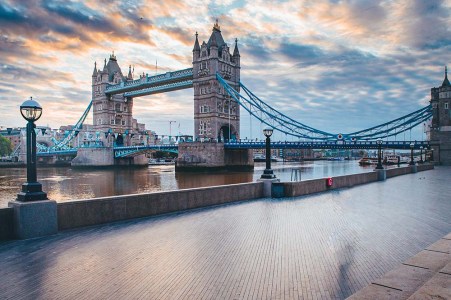
Despite everything, the Bamboovement wouldn’t be bambooving if we didn’t try to send you a positive message. There are things we have always taken for granted that weren’t positive at all. As a result of exploded tourism, Venice’s canals were so contaminated over time that when they cleared up in recent weeks, even locals were surprised to see fish living in them. Very poor air quality around the world seemed to be the norm. But the air quality has improved impressively as a result of the quarantine measures, in China, Italy, and Spain. And wildlife takes to the streets in big cities, making the beauty of our natural world visible to estranged city dwellers. These are little lights in an uncertain world, that can guide us to a better future and which the Bamboovement is more the willing to follow.
It’s heart-breaking to see that, only the hard way, we seem to understand the impact we have on our environment. So, once again, please take care of yourself, your loved ones, and also our environment. Because only together we can make our world a better place.
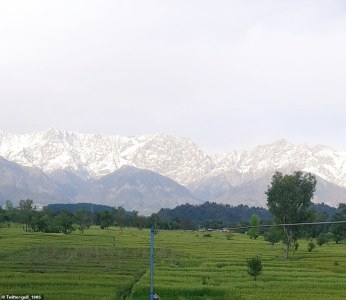
Thanks to a collaboration with Recup and Slow Food Youth Network, The Bamboovement has taken a first step towards the development of education on plastic. For environmental sustainability, to be included in primary and secondary schools in an informal, authentic, and fun way.
The Bamboovement is a Dutch start-up that aims to reduce the impact of our habits on the environment through the evolution of new materials and the development of eco-friendly products. Our mission is to create a movement that can facilitate sustainable projects through the exchange of innovative ideas. The Bamboovement embraces the simple principle that once small positive actions are combined, they can have an immense impact on our community.
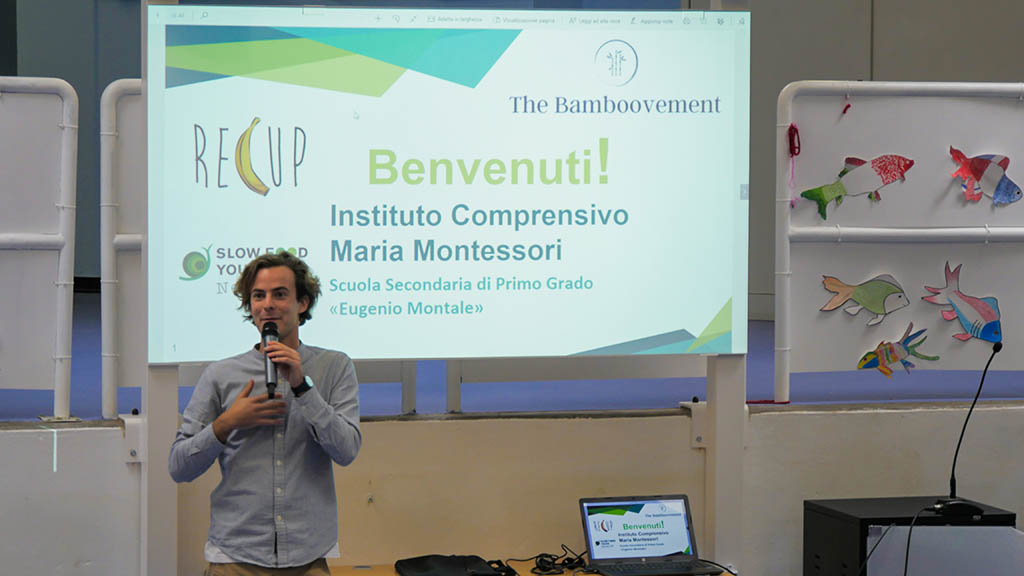
Recup is an association of volunteers, based in Milan, that aims to prevent food waste and social exclusion in local markets. Their tasks consist of simple yet effective actions. At the end of the day, a group of volunteers, helped by impoverished people, recover food from market stalls who freely decide to donate products that would otherwise go to waste. The rescued food is brought together at a meeting point within the same market, where decent products are separated from those that are no longer edible. Everyone is then free to take what they prefer, respecting other people’s needs. The beneficiaries are the same people who used to rummage in the baskets or to open the bags of damp left by the market stalls for the cleaning attendants. In this way, they create a concept of collaboration and community between different people. It also results in intercultural and intergenerational contact, which was previously missing.
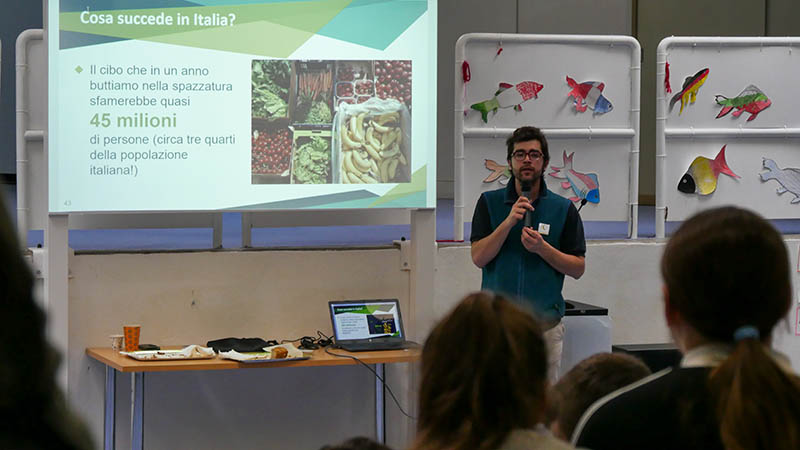
Slow Food is a global grassroots organization committed to restoring the right value to food. Slow Food pays close attention to the producers and respects the environment and ecosystems. This all, thanks to the knowledge of which local territories and traditions are custodians. Slow Food works in 150 countries every day to promote healthy and fair food for everyone. The Slow Food Youth Network (SFYN) is a worldwide network of young people creating a better future through food. SFYN groups raise awareness about important food issues such as how to feed the world, food waste, and sustainable food production, with the aim to stimulate positive action.
“Between the big things we can’t do and the little things we don’t want to do, the danger is doing nothing.”
Young people and adolescents are faced with complex global challenges. They want to face them and understand them.
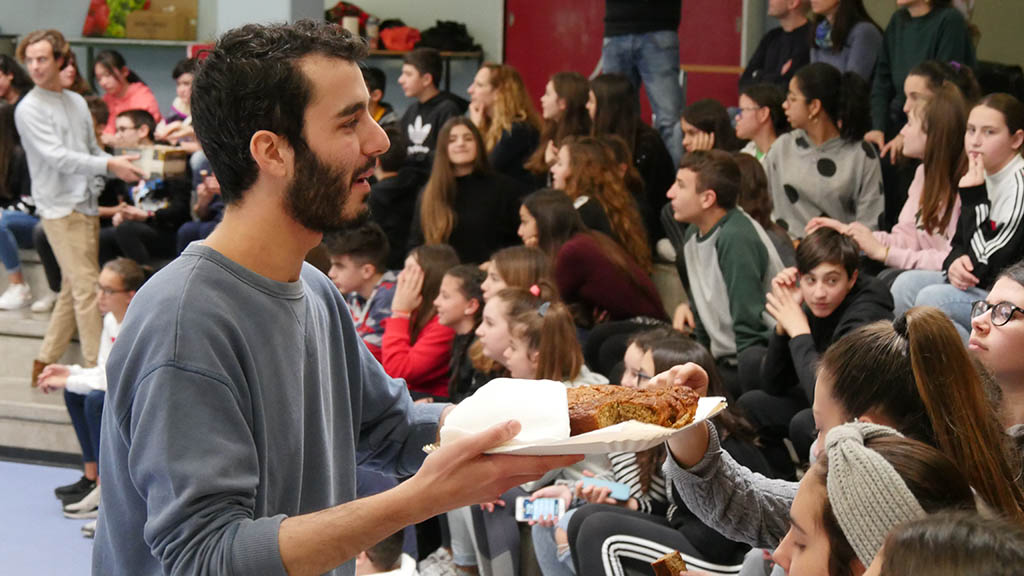
Education for sustainability can provide a clear contribution to society. By allowing students to face the contents and challenges from different perspectives, to ask themselves, for the common good, about values they care about, and to recognize their ability to act.
School has always been the place where the leaders of tomorrow are being educated. The education, in turn, is based on the knowledge of their surroundings. In this sense, environmental education is increasingly taking on a key role in classrooms today. It consists, for example, of teaching young people to respect the environment, the distinction between renewable and non-renewable energy, and the causes of environmental pollution. It is an indispensable resource to be able to form citizens and make them aware and ready to take action for a better tomorrow and for the good of their community.
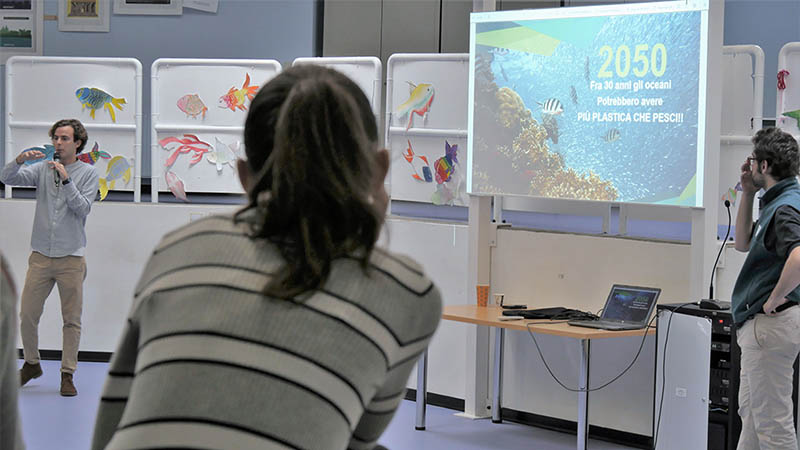
The UN’s Sustainable Development Goals (SDGs) show us the way. With our first School Project at the Montessori School of Bollate (Milan, Italy), The Bamboovement, wants to contribute to the goals of reducing plastic consumption and food waste through an educational path. By informing students on how small daily actions can have a positive impact on the well-being of our planet. How they can have an influence on the different environmental crises we see around us. They are the voice of tomorrow and through this our initiative for sustainable education was born.
The sustainable education program is structured in the following way:
To start, we involve the students with a trivia quiz in which they will be asked to reflect on their habits. Doing this allows us to have a deeper understanding of everyone’s knowledge on the topics that will be discussed afterwards. The test is developed in digital format. Therefore, in contrast to the school rules, we invite students to use their smartphones for the minutes necessary to complete the quiz. The answers to the quiz will subsequently be provided by arguing and deepening the discussed topics.

During the break, students are given some of The Bamboovement’s products and a snack prepared by the volunteers of Recup, thanks to the food recovered from street markets. Intended as a small gesture to leave a memory of the presentation, and as a testimony of an ecological alternative to our consumption. We propose simple steps on how they can make changes to their daily lives. By telling them more about the start of our projects, we hope to be able to inspire many more young minds.
To conclude, we guide a Q&A session with our bright audience – which revealed a positive image: taking care of the environment is already a central topic of concern among them. The result is a generation that cares about the environment and is aware of the importance of personal commitment to the cause. We found confirmation in the fact that some of them are independently looking for information on websites and other digital sources. Besides, the majority also took part in at least one event organized by the climate movement Friday For Future. Nevertheless, a school cannot give up being a place for sustainable educational. Pointing to the internet and climate strikes as methods for this educational path is not enough.
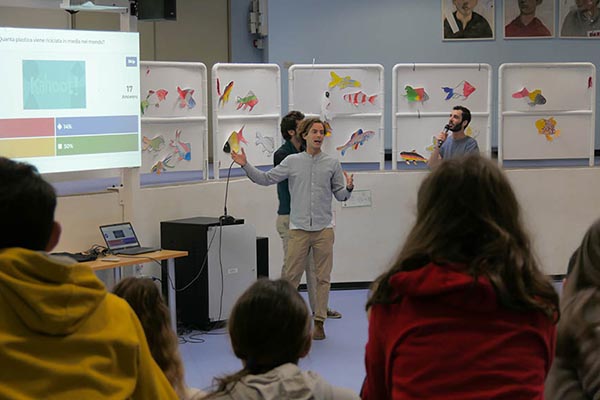
School is our place of choice for activating educational projects on the environment, sustainability, and global citizenship.
For the future of our School Project, we hope to touch many more cross-cutting themes based on the guiding idea of the cohesion “nature-human-society” to be integrated into the curriculum of education. Through a presentation, a short lesson, or a thematic project, we aim to offer this orientation into teaching. Schools don’t need to have a budget or take extra hours. However, a little imagination, creativity, and above all, willpower is required. Our School Project will assist school education in creating an essential foundation for the students. One that’s based on their interest in the environment and to keep moving towards a more conscious and eco-friendly society.
The Road to Sustainable Education
The Bamboovement aspires to teach many more bright young minds about the impact we are having on our environment and the simple steps we can take to make a difference. Currently, The Bamboovement offers education on plastic in English, Dutch, Spanish & Italian. In case you would like us to prepare a class (whether online or in person) feel free to reach out.
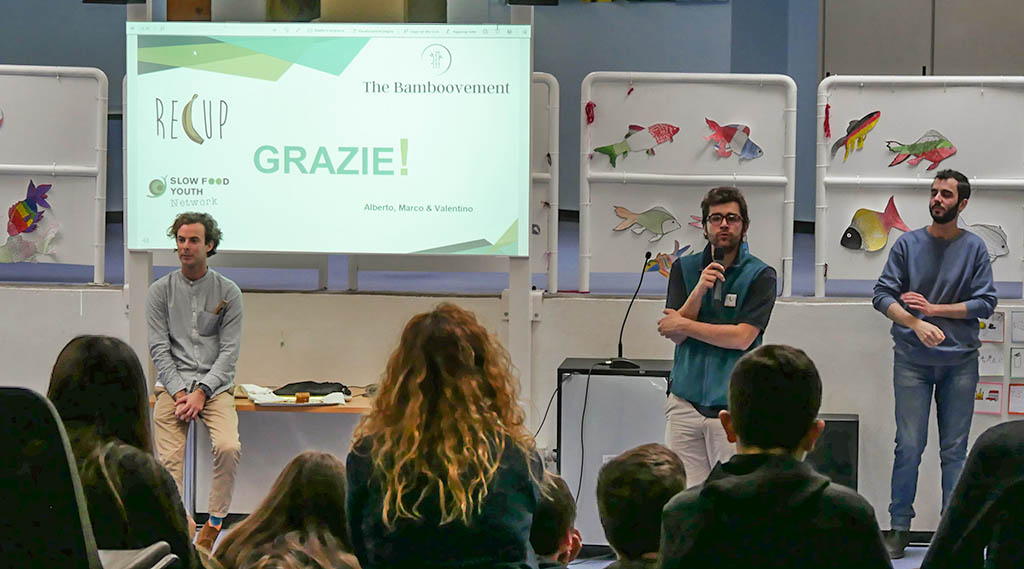
We all sometimes dream of those sandy white beaches, sipping a coconut while enjoying the sunset. The thing is that these paradise-like places are full of plastic waste. So read along and discover tips for eco-tourism: learn about steps that you can take to keep our beaches pristine.
To us, plastic bottles and cups are cheap and harmless. But nature pays a high price. If you don’t want to add to the ocean’s plastic soup while travelling, here’s what you can do in certain moments:
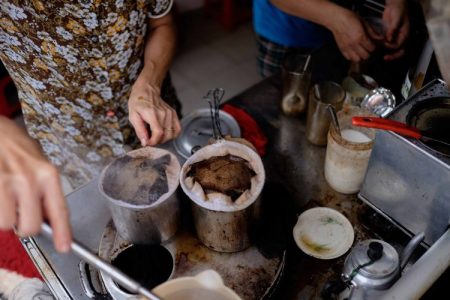


Do you have any other tips for eco-tourism? Please, share how you're travelling waste-free. Leave a comment below to inspire more people!
Did you know that we have been brushing with regular toothpaste tubes for over a century? Annually more than a billion toothpaste tubes end up in landfill, incendiaries and oceans. As you can imagine, this creates massive amounts of plastic waste which are devastating for our planet.
Let's crush plastic together by swapping conventional plastic toothpaste tubes for plastic-free alternatives with natural ingredients! If we all make small changes in our daily routines, we can make a huge impact together, for ourselves and the planet!
HappyTabs natural toothpaste tablets are the solution for a more sustainable and healthy, daily oral care routine. They contain high-quality natural ingredients that fight caries and plaque. HappyTabs toothpaste tablets are available in fluoride and fluoride-free versions. One jar contains approximately 80 toothpaste tablets and will thus last 1.5 months in usage if you use two tablets daily. Combine a jar with our bamboo toothbrush, and you are making significant steps towards a plastic-free life.
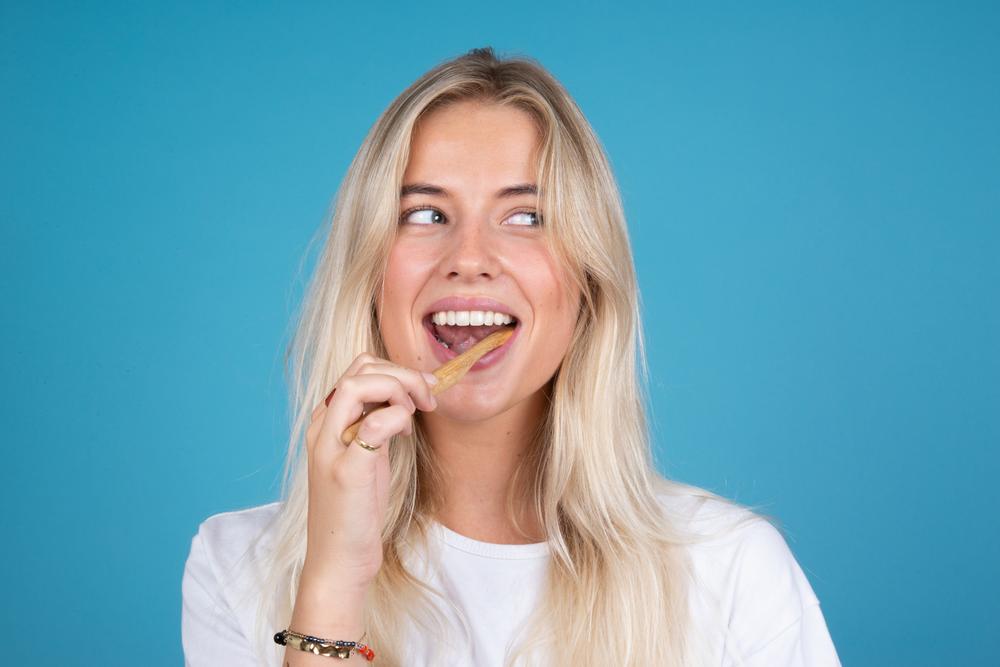
HappyTabs toothpaste tablets are easy to use. But above all, its a fun and a responsible way to brush your teeth with! All you need is a wet toothbrush. It’s just like toothpaste, but without the waste. All it takes are just 3 easy steps:
Another oral care product that fills up landfills, oceans and incendiaries is the toothbrush. Over 7 billion people live on our planet, and most of them brush their teeth with a regular toothbrush. 99% of these normal toothbrushes consist still of conventional plastics. If you really want to discover your inner-eco warrior, you could also swap your oldfashioned plastic toothbrush for a more sustainable alternative. Like a bamboo toothbrush, for example.
Why bamboo? Because it's one of the most sustainable natural resources in the world. Bamboo can grow at an incredible rate, up to one meter a day. It also requires minimal (natural) fertilisers, as many bamboo stems grow out of one rooting system. In case bamboo is harvested sustainably, the rooting system remains intact and regenerates new bamboo trees.
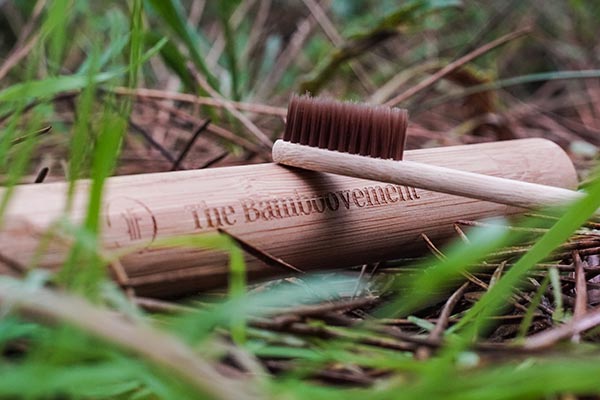
Did you get curious about trying out these great toothpaste tablets? Go on and try them! You find them here in our webshop. For the perfect match, you include one of our bamboo toothbrushes.
What do you suppose is the best way to help save the planet from pollution, waste, and climate change?
Every day, people feel guilty about the amount of plastic they’re using, from plastic toothbrushes to plastic bags to plastic water bottles. But, there’s an easy way to reduce your waste.
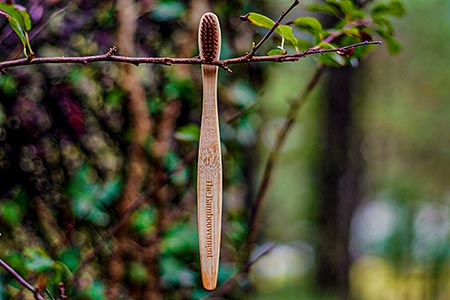
The first thing most of us touch in the morning is a plastic toothbrush: something that is such an integral part of our lives yet so harmful to the environment. We’ve grown up with plastic toothbrushes and toothpaste. Change can be uncomfortable and may take some time to getting used to, like remembering to bring reusable bags to the grocery store or to switching to plastic-free toothpaste tablets.
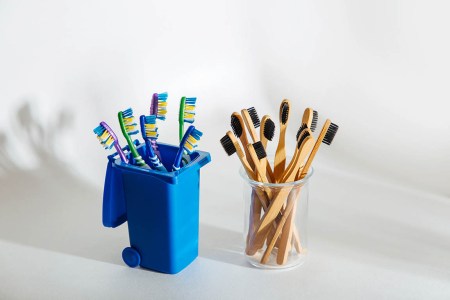
Eventually, the guilt begins to build and build. As the plastic bags start to pile up under the sink from grocery store runs, you feel like there’s something more you can be doing. As you begin to collect plastic bottles and containers in the trash unintentionally, you realize how big your footprint is.
When you throw away yet another plastic toothbrush in the bin, you know where it will end up: unrecycled and in landfills like all the other plastic waste that we have build up over the past years.
What is one small change you could make? How about switching your plastic toothbrush to a bamboo one? Committing to one sustainable step every week or month (or even better, every day) makes a significant impact. They can range from big changes, like flying less or taking the bike instead of the car. However, it’s the small changes in our every day lives that make a big impact as well. Using a bamboo toothbrush is one simple step you can take to reduce our plastic consumption.
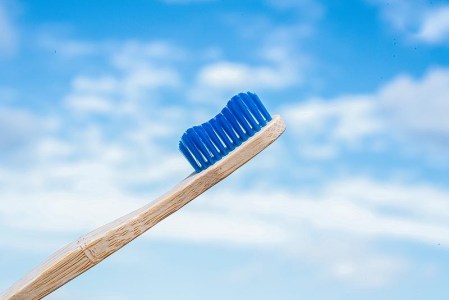
This daily reminder sitting on your sink will be more than just a toothbrush. Instead, a knowledge that you are doing your part, and are working towards a plastic-free future! The guilt will start to ease, and your idea about plastics will begin to change.
But why choose our toothbrushes instead of say, Colgate? The Bamboovement’s toothbrushes are natural and sustainable, made out of MOSO bamboo that grows up to a meter a day! Not only that, but the bristles are free of crude oil, made out of Nylon 610, which, while not recyclable also doesn’t contain any crude oil but castor oil instead. A plant-based oil with a significant lower carbon footprint than crude oil.
Using bamboo toothbrushes is both a great way to live a zero-waste lifestyle as well as help the environment! Did you know for every toothbrush sale, we donate $1 to the World Wildlife Fund?

Let’s turn to the experts. According to the American Dental Association, you should buy a new toothbrush every 3 months. With 740 million people living in Europe, this means almost four billion toothbrushes each YEAR!
If we apply that to an individual, that’s 300 toothbrushes in a lifetime. Now, imagine saving that amount of plastic and reducing that amount of waste, just by buying a bamboo toothbrush. Sounds like a good idea, right?
On orders above €25,- you receive a free bamboo toothbrush! Head over to our shop to check out all of our toothbrush designs and buy one today!
Is the current cosmetic industry a blessing, or should we take it as a lesson? Nowadays, cosmetics are dominated by the beauty industry. A vast sea of celebs release one beauty care line after another. It has become a multi-billion dollar industry that has lifted consumerism to a higher level. But what is actually in all these cosmetics that people are putting on their faces and in their hair? And what are the effects they have on our planet?
Before diving into the world of natural cosmetics and the reasons why we should use natural cosmetics, we take a look at how beauty products have come to play a significant role in our daily lives. If you think about makeup, you might not think of ancient civilisations. However, cosmetics have a rich history. Throughout our world, cosmetics have been used for various reasons like health benefits, religious ceremonies, and social status.

Ancient Egyptians were most likely the first civilization which started using cosmetic products. Stories go back to ancient Egyptians’ already using make-up by 10.000AC. All sorts of oils and natural creams were used, mainly to protect them against the scouring sun but for religious rituals as well.
Remarkable was that men and women would paint a combination of metal, lead, copper, ash and burnt almonds around their eyes – most likely the first version of kohl. The reason behind it was to fend off evil spirits. Interestingly enough scientists now discovered that this way of using makeup might have protected them against bacterial infections and other diseases. However, it’s hard to believe that putting lead and copper on your face is actually doing good to your skin. Heads up, natural cosmetics don’t contain copper and lead any more. Cleopatra, also known as the first devotee of red-lipstick, used lipstick that was made from crushed beetles and ants – creating strong pigmented tones.

Thousands of years later, natural cosmetics were introduced into East Asian cultures. By 3000AC Chinese people would paint their fingernails with a mix of gelatin, beeswax and egg. The colours of their nails would represent a social class. The highest royals would have the luxury of painting their nails gold and silver. Members in a slightly lower class would paint them red. Lower social levels, unfortunately, were not allowed to paint their nails in bright colours and had to get around with more unadorned nails.
Of course, cosmetics were used in many more places throughout the world. Indian women, for instance, have been using henna since 300BC. In the Middle Ages, perfumes were imported on crusades from the Middle East and brought to kingdoms throughout Europe. A fun fact for our British readers – about 700 years ago when Queen Elizabeth I introduced dyed red hair as a fashion statement – society women in the British Kingdom smeared their faces with egg whites to make them paler.
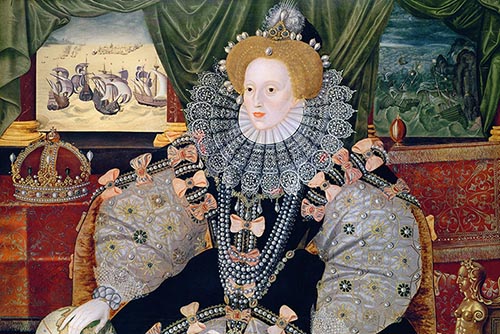
So how has the role of cosmetics changed? Well, in the era of kingdoms and empires, it was mainly royals wearing cosmetics. Somewhere down the line, there has been a shift from kings and queens setting cosmetic trends to Hollywood celebrities. Putting some egg yolk on your face to make you look pale won’t get you too many likes on Instagram. So influencers come into play. They are providing you with all sorts of tutorials on how to apply the makeup like your favourite celebrity.
One after the other star is introducing a new beauty line. To be honest with you, I have never really been spending too much time researching the number of beauty lines celebrities have provided us with. But, there’s probably more than you can imagine. The newest to join celebs entering the cosmetic industry is Hilary Duff with a collaboration with Nudestix. According to Magazine 34th Street, it’s ‘what dreams are made of’. Personally, I rather dream of beautiful white sandy beaches, but I’m sure there’s a big market out there for Hilary.

It’s not without a reason that one celebrity after the other jumps into the pool of the beauty industry. Kylie Jenner became the youngest billionaire with her beauty line Kylie Cosmetics. While writing this blog, my friend told me there was some scandal and that Kylie might have only been a self-proclaimed billionaire. Honestly, who really cares? I feel like I’m getting sucked too much into the world of celebs and their beauty lines.
Times have changed, from people burning some almonds, adding lead and copper to it and smearing it on your face to scrolling through thousands of influencers giving tutorials on the newest skincare products. It has, in fact, become a multi-billion dollar industry that had an estimated worth of 532 billion dollars in 2019.

So why are a lot of beauty lines harmful? Let’s take a look at one of the products of our self-proclaimed billionaire – Kylie Cosmetics. I’ve dug a little deeper into the ingredients of one of her bestsellers – the Skin Concealer. The thing about ingredients in cosmetic products is that they can be as confusing as reading about quantum mechanics. So most often, people have no idea what they are actually putting on their face. To apply a good rule of thumb: when your favourite celebrity uses it, it must be good! Maybe not really. let me show you why.
So what’s in Kylie’s Skin Concealer? Well, of course, we’ve got Dimethicone Crosspolymer, Polymethylsilsesquioxane, Copolymer and Isopropyl Titanium Triisostearate. It already took me a while to pronounce the names of these ingredients, so it comes to no surprise that most of us have no idea at all what they actually are. All these ingredients are synthetics that contain microplastics. They don’t necessarily have to be directly harmful to your skin. However, they are most definitely toxic to our planet as they don't break down. Also, when put in lip gloss and lipstick, there’s a big chance that you will ingest parts of it which is actually harmful. The icing on the cake in Kylie’s Skin Concealer is probably phenoxyethanol.

Phenoxyethanol is a preservative, and a synthetic ingredient that is often found in cosmetic products, about 24% of all beauty products contain Phenoxyethanol. It can be very harmful and is likely to cause skin and lung irritation, especially with higher doses. Doses of less than 1% are generally excepted. However, both the European Commission on cosmetic ingredients and the FDA have emphasised that phenoxyethanol is toxic, especially when applied to lips or around the mouth.
In case you are interested in discovering what ingredients your favourite brand is using, you can check out the product finder of Beat the Microbeads.
Luckily there are a lot of small companies who make lovely natural products. They are not just better for your skin and hair but also a blessing for the planet. Luckily, we also see some changes in the multi-billion dollar world of beauty products.
Actress Jessica Alba emphasises natural cosmetics with her brand the Honest Company. Her products consist of ingredients that are free of pollutants and microplastics. Australian supermodel Miranda Kerr founded Kora Cosmetics back in 2009. There is a strong focus within the company on using natural products that don’t contain microplastics and other synthetic preservatives.
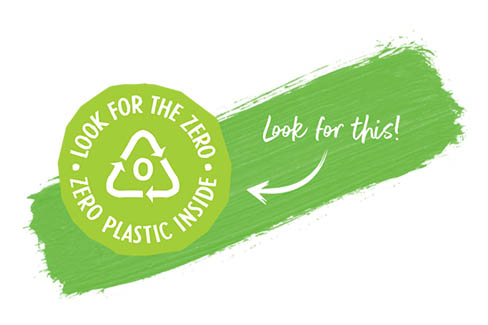
Are the Honest Company and Kora Cosmetics my best option then for natural beauty products? Not entirely, but it’s a hopeful sign that major brands are accentuating natural ingredients. Hopefully, they’ll be able to convince the Kylie Jenner’s of this world soon enough.
The reason why both Jessica Alba and Miranda Kerr can still improve their beauty lines is that they keep relying on plastic too much, as does 99% of the cosmetic industry. Luckily there is a small group of cosmetic pioneers who are making ground the past years. Lush is probably the most famous of them all. They are a UK-based cosmetic retailer, founded in 1995 by Mark Constantine. He realised that shampoo consisted mostly of water. By taking water out of the recipe, it was possible to make a shampoo bar and get rid of the plastic bottle.
If you genuinely want to reduce your plastic footprint, I would advise you to switch to solid cosmetics. Give your hair a break from the decades of chemicals they have endured and save our sea friends from these nasty microplastics. We still receive a lot of questions about solid cosmetics and especially about shampoo bars, so here are a few things you should know about them.
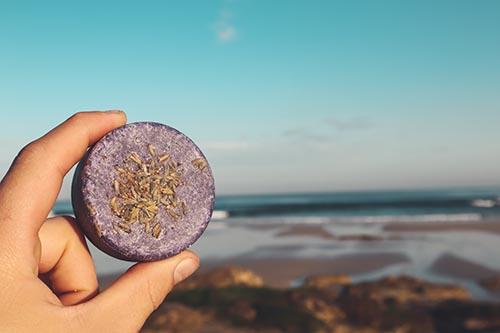
Shampoo bars are a natural alternative to liquid shampoo. By taking out the water from the recipe, the process becomes similar to making soap bars. The bars consist of natural plant oils, essential oils and butter. Giving your hair and scalp the nourishment it needs without all the chemicals.
Your hair might have to get used to shampoo bars the first few washes. See it as a detoxing process. Your hair might have gotten addictive to all these nasty chemicals. Usually, it takes 2 - 8 washes before your hair has gone through rehab, or in the shampoo bar community, also known as ‘the purge’ or ‘the waxies’. It takes some time because your scalp is balancing out the oil production. The good thing about getting the waxies? It only lasts for a short period and is the path to the healthiest hair you have ever had! If you don’t feel like doing a purge, you can speed up the process by a vinegar rinse or by using a solid conditioner bar.
The past years there have been remarkable developments in the cosmetic industry. An easy way to reduce plastic is by making a list of plastic items you use on a daily or weekly basis. We are listing a few with some perfect alternatives.
Commercial make-up, in short, can be described as (not to be too blunt here) crap for the environment. The trend of zero waste cosmetics is gaining a lot of popularity in recent years. And not without reason. Higher quality products that don’t cause any harm. If you have no idea where to start looking for them, here are a few tips.
Dirty Hippie Cosmetics is an Australian plastic-free cosmetic brand. They have a wide range of plastic-free and zero waste cosmetics. If you’re not living in Australia, you might want to think about the carbon offset for shipping. In case you are based in Europe, I would check out Vyana Zero Waste Beauty. Vyana was founded by Daisy, who set out to change the cosmetic industry with 100% natural beauty products. Her products are fair-priced, 100% cruelty-free and vegan. Another great option is FatandtheMoon. They have a large selection of hand-made cosmetic products, based on natural healers and herbalists. Besides making natural cosmetics, they also actively support several charities.

Another great benefit about natural cosmetics is that they often last much longer than their not so natural alternatives — body bars, conditioner bars and shampoo bars equal about three bottles. Count the waste you are saving with one bar! In the last few years, the trend for cosmetic bars is exploding. Companies that are producing them are popping up everywhere. My advice would be to try out a few. It’s the same as with regular shampoo. You might like one brand better than the other.
So what should you look into when buying a bar? Personally, I like bars that foam. But it could also just be a feeling as it’s not the foam that is rinsing your hair. But still, taking out the foam is somehow reducing my shower experience. If you have an answer to this, I’d love to hear about it in the comments. So what makes shampoo foam? Most often it’s SLS. In itself, SLS isn’t harmful. However, it mainly consists of palm oil. Look for sodium lauryl sulfate on the list of ingredients to see if your shampoo bar contains SLS. Lush has made a statement that they are currently actively working on finding a suitable alternative for SLS. Another great brand is Flow Cosmetics from Finland. Their bars are 100% natural; they are eco-certified and don’t contain SLS.
In our shop, you can find shampoo bars and body soap bars from the Dutch brand HappySoaps. We chose this brand because their bars are completely palm oil-free, contain no microplastics whatsoever, are vegan and have, of course, only been tested on humans.
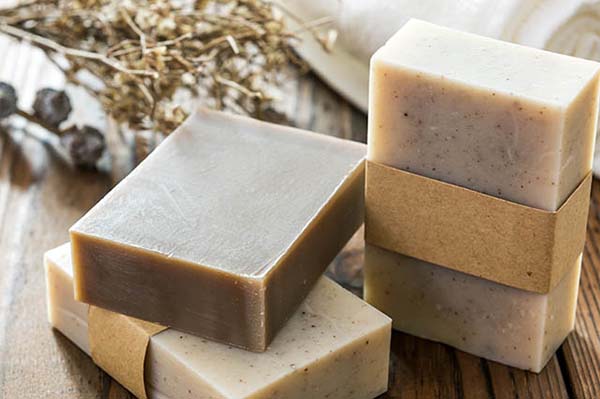
Another newcomer to the natural cosmetic industry is the natural deodorant. Have you ever wondered what you are putting on your armpits? Most likely at least some aluminium and several parabens (which can kill corals). Switching to natural deodorant, therefore, isn’t only better for your own body but also the environment. There are a few different options when you decide to ditch Dove, Nivea or Axe. Here at The Bamboovement, we tried deodorant powder. Which is natural as hell, but we had a hard time getting used to it. If you would like to try it out, I would go for The Ohm Collection.
We tested some natural rolls. Be careful to look at the ingredients. Many label themselves as all-natural but still contain synthetic preservatives or microplastics. In the end, we liked the smearable deodorant the most. It takes a few uses to get used to it, but once you’ve changed your mindset, you will love the natural touch of it. We offer a couple of different types now in our webshop. They are 100% natural, vegan and last 2 – 3 months.
Are you a true eco-warrior and do you have some spare time? Here is a cool blog post on how to make natural deodorant yourself.
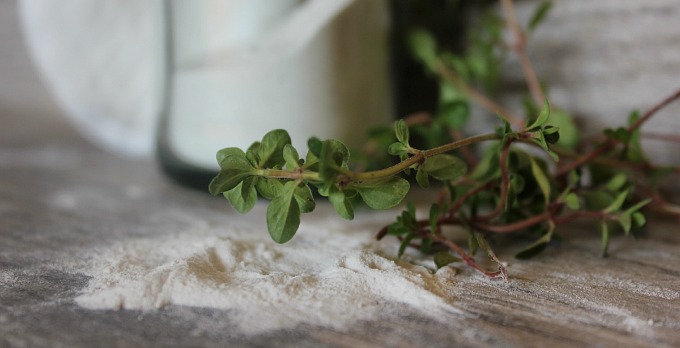
For pretty much any cosmetic item, we can find amazing plastic-free and organic alternatives. This doesn’t apply for razors though (yet). Pretty much the only option is safety razors. Peace with the Wild offers a variety of sustainable safety razors. Although they last long and the blades can easily be replaced – they can leave some nasty cuts. Especially in some sensitive areas...
The past year we have been working here at The Bamboovement on the world’s first plastic-free razor. We received a subsidy from the Dutch government to work on this project, and we are planning to release it within the next few months. Natural shaving bars are already among the products in our shop. The razor will consist of a 100% natural bamboo handle, and the cartridge of bamboo fibre. If you would like to stay up-to-date on the developments of our razor, you can subscribe to our newsletter.
As you can see, with a few simple daily changes, you can significantly reduce your plastic consumption. If you are interested to know more about your current plastic footprint, by clicking on this link you can find a useful tool to calculate your plastic consumption.
So to get back to our question. Why should you be using natural cosmetics? We can’t bury our head’s in the sand any more when it comes to current environmental challenges. By making some easy changes in our daily lives, we make a significant difference. We think it’s time to ditch the products from the Kylie Jenner’s of this world and get inspired once again by Cleopatra. However, please don’t put lead on your face.
Do you have other tips that you would like to share on how to reduce cosmetic waste? Leave a comment below! Also, in case you enjoyed reading this blog post, feel free to share it with your followers to inspire more people to switch to natural cosmetics.
It happens to all of us. One morning you pick up your brush to perform the daily ritual. But something is not the same. You look at it and notice. The bristles are not as resilient as before and rather remind hangover-morning hair. And the handle is nothing like that youthful bamboo branch you used to know but a darkish chunk of driftwood.
You come to realize – the toothbrush has served your beautiful smile and has to give place to a new one. Yet, this does not mean you have to buy your old toothbrush a one-way ticket to the landfill. Below, you’ll read 7 ways to reuse a bamboo toothbrush.
When the brush is not suitable anymore for cleaning teeth, it can still serve its mission. Keep using it as a cleaning tool for tricky and hard to reach spots, for instance, to get rid of these annoying dark stains between the tiles in the bathroom.

Another retired toothbrush can find a new home in your kitchen and help you effectively clean small details like the blades of a hand blender or a kettle’s gooseneck.
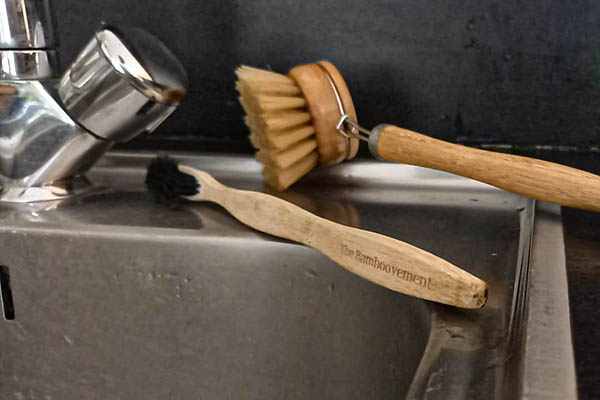
Who wouldn’t want to keep their kicks good as new for years? Your old toothbrush will come in handy, no need to buy a polishing brush!
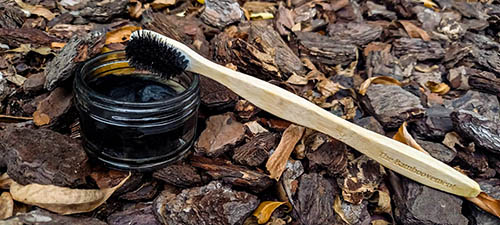
Maybe you have a garden or grow baby spinach and microgreens on the windowsill. May be your mom has a pot of peonies in her house.

Remove the bristles, stick the holder into the flowerpot, and loosely tie your plant with a craft string. The plant holder is good to go!
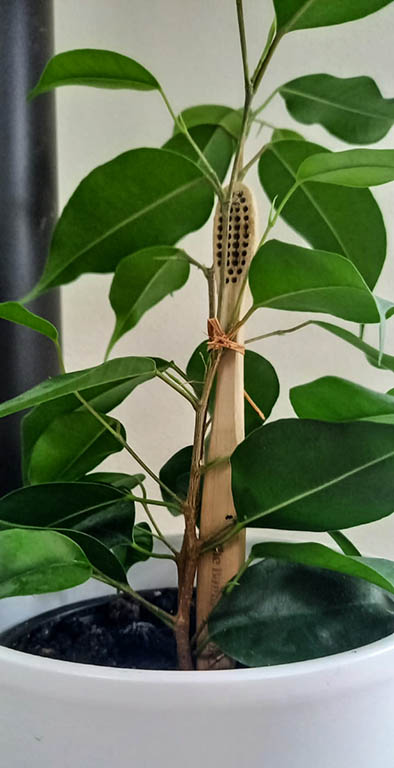
Pull out the bristles, and you get a few little openings in which you can place the incense sticks. Make the holder even more pretty by painting the handle with acrylic colors.

Awake your imagination and revive your artistic skills. A bamboo handle has unlimited potential if you let that creative mind of yours flow!
Bottom line. Upcycling is one of the pillars of sustainable living. Every little step can make a huge impact. All you have to do is maintain this mindset and be creative in giving old things a new life!
Do you know more way to reuse a bamboo toothbrush? Feel free to share your ideas in the comments below.
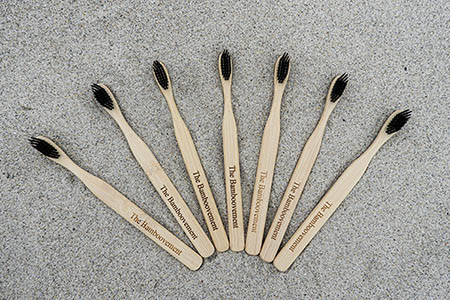
Did you know that bamboo has been on people’s minds for over ten thousand years? To put this into perspective: it’s only been for the last two thousand years since the Holy Bible is playing an essential role in our lives. This statement is in no way intended to insult and to claim that bamboo is five times as important as the Bible. However, admittedly, here at the Bamboovement, we do worship it quite thoroughly. Read along and let yourself get surprised about some astonishing bamboo facts and stories.
(more…)